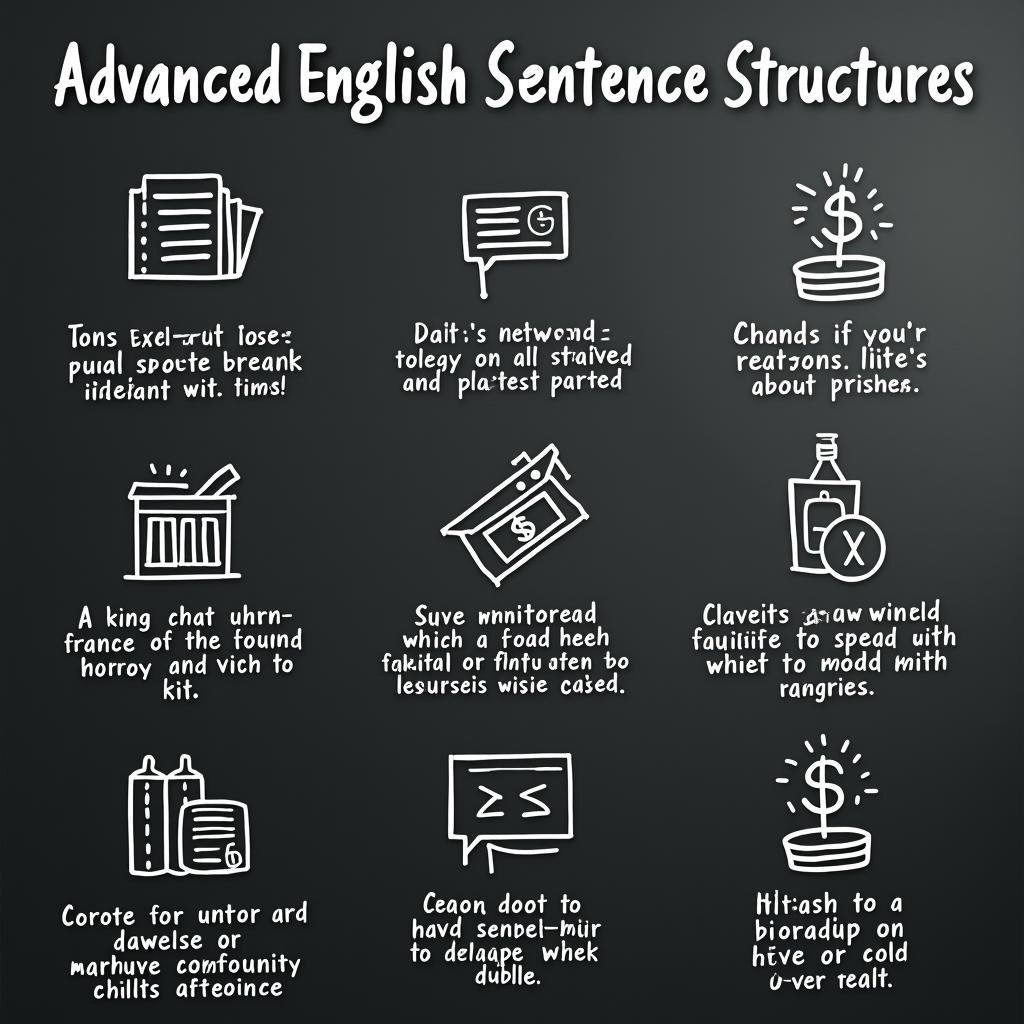Trong vài năm gần đây, chủ đề Importance Of Financial Literacy In Young Adults xuất hiện khá đều trong đề thi IELTS Writing Task 2, thường dưới dạng bàn về việc dạy quản lý tài chính cá nhân ở trường phổ thông/đại học. Đây là chủ đề “thật” và thời sự: học sinh–sinh viên ra trường thường thiếu kỹ năng lập ngân sách, hiểu lãi suất, thẻ tín dụng, đầu tư… Bài viết này giúp bạn: nắm 2-3 đề thi đã được xác minh, hiểu cách phân tích đề, đọc 3 bài mẫu Band 6–9, học bộ từ vựng–cấu trúc ăn điểm, và dùng checklist chấm chéo trước khi nộp bài.
Nội dung bài viết
- 1. Đề Writing Part 2
- 2. Bài mẫu Band 8-9
- Phân tích Band điểm
- Các yếu tố giúp bài này được chấm điểm cao
- 3. Bài mẫu Band 6.5-7
- Phân tích Band điểm
- So sánh với bài Band 8-9
- 4. Bài mẫu Band 5-6
- Phân tích Band điểm
- Những lỗi sai của bài – phân tích & giải thích
- Cách Cải Thiện Từ Band 6 Lên Band 7
- 5. Từ vựng quan trọng cần nhớ
- 6. Cấu trúc câu dễ ăn điểm cao
- 7. Checklist Tự Đánh Giá
- Kết bài
Các đề thi thực tế đã được xác minh (được báo cáo trên IELTS Liz, IELTS-Blog, British Council materials):
- “Some people believe that secondary schools should provide students with financial education. To what extent do you agree or disagree?” (IELTS Liz – reported question)
- “Some people think that children should be taught how to manage money at school. Do you agree or disagree?” (IELTS-Blog – reported question)
- “Financial education should be a mandatory part of the high school curriculum. To what extent do you agree or disagree?” (xuất hiện trong tài liệu luyện thi uy tín)
Để thấy mối liên hệ tâm lý–tài chính thường được dùng làm luận cứ trong bài, bạn có thể tham khảo thêm một phân tích gần gũi: Tương tự như importance of financial planning for mental well-being, ý tưởng về sức khỏe tinh thần và tài chính liên kết chặt chẽ khi lập luận ở Task 2.
 Hinh minh hoa tam quan trong financial literacy voi chu de IELTS Writing Task 2
Hinh minh hoa tam quan trong financial literacy voi chu de IELTS Writing Task 2
1. Đề Writing Part 2
Some people believe that financial education should be a mandatory part of the school curriculum for teenagers. To what extent do you agree or disagree?
Dịch đề: Một số người tin rằng giáo dục tài chính nên là phần bắt buộc trong chương trình học ở trường cho lứa tuổi thiếu niên. Bạn đồng ý hay không đồng ý ở mức độ nào?
Phân tích đề bài:
- Dạng câu hỏi: Opinion (To what extent do you agree or disagree?). Bạn cần nêu rõ lập trường và phát triển lý lẽ nhất quán.
- Thuật ngữ quan trọng:
- financial education: giáo dục tài chính (bao gồm lập ngân sách, tiết kiệm, lãi suất, nợ, đầu tư cơ bản).
- mandatory part of the school curriculum: môn bắt buộc trong chương trình học chính khóa.
- teenagers: lứa tuổi THCS/THPT (13–18).
- Lỗi thường gặp của học viên Việt Nam:
- Lạc đề sang “dạy kinh doanh” thay vì “quản lý tài chính cá nhân”.
- Nêu ví dụ chung chung, không có cơ chế/logic (ví dụ: “dạy tài chính tốt nên xã hội tốt” nhưng thiếu giải thích).
- Dùng từ money/finance lặp lại, thiếu paraphrase.
- Lỗi mạo từ (a/the), số ít–số nhiều (skill/skills), giới từ (depend on, invest in).
- Cách tiếp cận chiến lược:
- Chọn lập trường rõ ràng (đồng ý mạnh/đồng ý có điều kiện/cân bằng).
- 2 thân bài mạch lạc: mỗi đoạn tập trung 1 luận điểm trung tâm, có ví dụ minh họa (học phí, thẻ tín dụng, nợ sinh viên, case Việt Nam).
- Kết nối với mental well-being, bất bình đẳng, trách nhiệm trường học–gia đình để tăng chiều sâu.
2. Bài mẫu Band 8-9
Đặc điểm: Lập luận chặt chẽ, ví dụ cụ thể, từ vựng học thuật đa dạng, câu phức linh hoạt, kiểm soát độ dài.
Bài luận (khoảng 300 từ):
While literacy and numeracy are long-standing pillars of schooling, modern life demands another foundation: financial literacy. I strongly agree that personal finance should become a mandatory subject for teenagers because it equips them to navigate increasingly complex markets and safeguards their long-term well-being.
To begin with, adolescence is precisely when many individuals form lifelong money habits. Without explicit instruction, students often learn about credit cards, online shopping, or student loans through costly trial and error. A structured curriculum that covers budgeting, interest rates, compound growth, and responsible borrowing would transform abstract numbers into everyday decisions. For example, understanding how a 2% difference in interest accumulates over years can deter impulsive borrowing and encourage early saving. Such knowledge is not merely practical; it is civic. Teenagers who grasp taxes, insurance, and consumer rights are better prepared to participate in the economy as informed citizens.
Critics contend that schools are already overloaded and that parents should teach money management. While time is scarce, this objection overlooks two realities. First, financial products are evolving faster than family traditions, so relying on parental guidance risks perpetuating outdated or unequal knowledge. Second, well-designed lessons can be integrated across subjects: a mathematics unit can model compound interest, while civics can explore taxation and social safety nets. In this way, financial education becomes an interdisciplinary thread rather than an extra burden.
Ultimately, making finance compulsory is about fairness as much as efficiency. Not all households provide the same exposure to sound money habits; a universal curriculum narrows this inequality by giving every teenager a toolkit for adulthood. If schools are tasked with preparing students for life, excluding the rules of money—rules that shape housing, healthcare, and even mental health—would be indefensible. Mandatory financial education, therefore, is not a luxury but a modern necessity.
Phân tích Band điểm
| Tiêu chí | Band | Nhận xét |
|---|---|---|
| Task Response (Hoàn thành yêu cầu) | 8.5 | Trả lời trực diện, lập trường “strongly agree” rõ ràng, phát triển đủ 2 luận điểm chính kèm ví dụ cụ thể (interest rates, taxation). Có phản biện quan điểm ngược, kết luận nhất quán. |
| Coherence & Cohesion (Mạch lạc & Liên kết) | 8.0 | Mỗi đoạn một ý trung tâm; có chuyển đoạn hợp lý; cohesion bằng từ nối tinh tế (While, To begin with, Critics contend, Ultimately). Không lạm dụng từ nối. |
| Lexical Resource (Từ vựng) | 8.5 | Từ vựng học thuật giàu: safeguard, compound growth, impulsive borrowing, civic, interdisciplinary thread, universal curriculum. Collocations tự nhiên, ít lặp. |
| Grammatical Range & Accuracy (Ngữ pháp) | 8.5 | Đa dạng cấu trúc: mệnh đề phụ thuộc, mệnh đề quan hệ, đảo ngữ nhẹ, cụm phân từ. Độ chính xác cao, không lỗi rõ rệt. |
Các yếu tố giúp bài này được chấm điểm cao
- Lập trường rõ ràng ngay từ câu đầu, duy trì đến kết bài.
- Ví dụ có cơ chế: “2% interest difference” giải thích vì sao ảnh hưởng hành vi.
- Phản biện và bác bỏ hợp lý: tải chương trình nặng, vai trò phụ huynh.
- Liên hệ bình đẳng giáo dục và sức khỏe tinh thần, tăng chiều sâu xã hội.
- Collocations tự nhiên: responsible borrowing, informed citizens, universal curriculum.
- Kỹ thuật “thread” liên môn giúp ý tưởng sáng tạo mà thực tế.
- Kết bài đanh gọn với “not a luxury but a modern necessity”.
3. Bài mẫu Band 6.5-7
Đặc điểm: Lập luận rõ, ví dụ gần gũi, có một vài hạn chế về từ vựng học thuật/độ tinh tế liên kết.
Bài luận (khoảng 260 từ):
Many young people finish school without knowing how to budget or deal with debt, so I agree that financial education should be compulsory for teenagers. This would help them make better choices and avoid common mistakes when they start earning or borrowing.
Firstly, money habits start early. If students learn how to track expenses, compare prices, and plan for emergencies, they are more likely to live within their means. For instance, a short module on interest could show how credit card debt quickly becomes expensive, while saving a small amount every month can grow significantly. These lessons are practical and can be taught with real-life tasks, such as creating a simple monthly budget for a student.
On the other hand, some people say parents should teach these skills or that schools are already too busy. However, not every family has the same knowledge. Some parents are not confident with finance themselves, so relying only on them may increase inequality. Schools, by contrast, can provide the same basic tools for everyone. In addition, financial topics can be connected with maths or social studies to save time.
In conclusion, making personal finance mandatory would prepare teenagers for adult life. While it may add some pressure to the timetable, the long-term benefits are greater than the costs. For these reasons, I believe financial classes should become a standard part of secondary education.
Phân tích Band điểm
| Tiêu chí | Band | Nhận xét |
|---|---|---|
| Task Response (Hoàn thành yêu cầu) | 7.0 | Trả lời đúng yêu cầu, có luận điểm–ví dụ rõ. Phản biện có nhưng còn ngắn, chưa khai thác chiều sâu (thiếu dẫn chứng mang tính hệ thống). |
| Coherence & Cohesion (Mạch lạc & Liên kết) | 7.0 | Bố cục chuẩn 4 đoạn. Liên kết logic nhưng từ nối còn cơ bản; một vài câu chuyển ý chưa thật mượt. |
| Lexical Resource (Từ vựng) | 6.5 | Từ vựng đủ dùng, ít lỗi, nhưng collocations còn phổ thông (make better choices, pay for debt). Cần nhiều từ mang sắc thái học thuật hơn. |
| Grammatical Range & Accuracy (Ngữ pháp) | 7.0 | Có câu phức và mệnh đề quan hệ; đôi chỗ cấu trúc còn đơn giản. Độ chính xác tốt, không lỗi nghiêm trọng. |
So sánh với bài Band 8-9
- Bài 8-9 dùng ví dụ mang cơ chế (2% interest gap) và mở rộng sang “civic participation”; bài 6.5-7 thiên về mô tả, ít “vì sao” ở tầng sâu.
- Về từ vựng: Band cao dùng collocations và ẩn dụ học thuật (interdisciplinary thread); Band 6.5-7 thiên về từ thông dụng.
- Về phản biện: Band cao phản biện đa chiều và đề xuất tích hợp liên môn; Band 6.5-7 chỉ bác bỏ ngắn gọn.
4. Bài mẫu Band 5-6
Đặc điểm: Ý chưa phát triển sâu, liên kết rời rạc, từ vựng lặp, lỗi ngữ pháp phổ biến nhưng vẫn hiểu được.
Bài luận (khoảng 260 từ):
Many students do not know about money, so schools must teach it. I agree because money is very important in life and young people need this knowledge for future.
First, when teenagers get money they often spend quickly. If they learn finance, they will not waste. For example, they can learn budget and save money every month. This is very good and help them to not have debt. Also, they can learn about interest rate and invest for long time, so in the future they can be rich.
Second, parents sometimes teach money, but not all parents can. Schools are better because school has teachers and books. In my country many young do not understand about tax and insurance and etc, so they make mistake when they work. If school teach this, they can avoid problem.
However, school already have many subjects. Maybe finance make timetable heavy. But I think we can put it inside math or social subject, and then it is okay. Finally, I believe it is necessary for teenagers to study money in school.
Phân tích Band điểm
| Tiêu chí | Band | Nhận xét |
|---|---|---|
| Task Response (Hoàn thành yêu cầu) | 6.0 | Có quan điểm và một vài lý do, nhưng lập luận nông, ví dụ chung chung (be rich), thiếu minh chứng cụ thể. |
| Coherence & Cohesion (Mạch lạc & Liên kết) | 5.5 | Liên kết đơn giản; lặp ý; câu chuyển đoạn đột ngột. Từ nối hạn chế. |
| Lexical Resource (Từ vựng) | 5.5 | Lặp “money/learn/finance”; collocations sai hoặc thiếu tự nhiên. Dùng từ chưa chính xác (social subject). |
| Grammatical Range & Accuracy (Ngữ pháp) | 5.5 | Lỗi mạo từ, chia động từ, số ít–số nhiều; cấu trúc câu đơn giản. Dù vậy, ý vẫn hiểu được. |
Những lỗi sai của bài – phân tích & giải thích
| Lỗi sai | Loại lỗi | Sửa lại | Giải thích |
|---|---|---|---|
| help them to not have debt | Ngữ pháp/Collocation | help them avoid debt | Tránh “to not V”; collocation tự nhiên: avoid debt. |
| interest rate and invest for long time | Ngữ pháp/Từ vựng | interest rates and long-term investing | Số nhiều “rates”; danh động từ “investing”; collocation long-term investing. |
| many young do not understand | Ngữ pháp | many young people do not understand | “Young” không dùng như danh từ số nhiều trong văn trang trọng. |
| tax and insurance and etc | Tính trang trọng | taxes and insurance | Tránh “etc.” trong IELTS; “taxes” số nhiều đúng ngữ cảnh. |
| school already have | Chia động từ | schools already have | Chủ ngữ số nhiều “schools” + have; nếu số ít “school” thì has. |
| if school teach this | Chia động từ | if schools teach this | Chủ ngữ số nhiều; phù hợp mạch văn. |
Cách Cải Thiện Từ Band 6 Lên Band 7
- Thay ví dụ chung bằng tình huống có số liệu cơ chế (ví dụ: credit card 25% APR vs savings 5%).
- Tăng collocations học thuật: responsible borrowing, financial safeguards, budget discipline.
- Đa dạng cấu trúc: thêm mệnh đề nhượng bộ (Although…), cụm phân từ (By teaching…), và câu chẻ (It is financial literacy that…).
- Sửa lỗi cơ bản: mạo từ, chủ–vị, danh–động từ, tiền–hậu tố.
- Phát triển phản biện: thừa nhận tải chương trình, đề xuất tích hợp liên môn, đánh giá tính khả thi.
Để mở rộng góc nhìn luận cứ liên quan sức khỏe tinh thần, điều này có điểm tương đồng với importance of financial planning for mental well-being khi việc kiểm soát tài chính giảm căng thẳng và quyết định bốc đồng.
5. Từ vựng quan trọng cần nhớ
| Từ/Cụm từ | Loại từ | Phiên âm | Nghĩa tiếng Việt | Ví dụ (English) và Collocations |
|---|---|---|---|---|
| financial literacy | n. | /faɪˈnænʃl ˈlɪtərəsi/ | hiểu biết tài chính | Schools should build financial literacy; financial literacy levels |
| budgeting | n./gerund | /ˈbʌdʒɪtɪŋ/ | lập ngân sách | Effective budgeting prevents overspending |
| compound interest | n. | /ˌkɒmpaʊnd ˈɪntrəst/ | lãi kép | Learn how compound interest works; compound interest calculator |
| responsible borrowing | n. phrase | /rɪˈspɒnsəbl ˈbɒrəʊɪŋ/ | vay mượn có trách nhiệm | promote responsible borrowing habits |
| impulsive spending | n. phrase | /ɪmˈpʌlsɪv ˈspendɪŋ/ | chi tiêu bốc đồng | curb impulsive spending |
| informed citizens | n. phrase | /ɪnˈfɔːmd ˈsɪtɪzənz/ | công dân hiểu biết | become informed citizens |
| universal curriculum | n. phrase | /ˌjuːnɪˈvɜːsl kəˈrɪkjələm/ | chương trình chung | a universal curriculum standard |
| financial safeguards | n. phrase | /faɪˈnænʃl ˈseɪfɡɑːdz/ | “đai an toàn” tài chính | build financial safeguards |
| long-term investing | n. phrase | /ˌlɒŋ ˈtɜːm ɪnˈvestɪŋ/ | đầu tư dài hạn | focus on long-term investing |
| civic participation | n. | /ˈsɪvɪk pɑːˌtɪsɪˈpeɪʃn/ | tham gia công dân | financial knowledge supports civic participation |
| to deter borrowing | v. phrase | /dɪˈtɜː/ | ngăn cản vay mượn | high interest rates deter borrowing |
| to narrow inequality | v. phrase | /ˈnærəʊ/ | thu hẹp bất bình đẳng | education can narrow inequality |
| moreover | linker | /mɔːˈrəʊvə/ | hơn nữa | moreover, evidence shows… |
| by contrast | linker | /ˌbaɪ ˈkɒntrɑːst/ | trái lại | by contrast, schools can… |
| not a luxury but a necessity | phrase | /nɒt ə ˈlʌkʃəri bʌt ə nəˈsesəti/ | không phải xa xỉ mà là cần thiết | education is not a luxury but a necessity |
6. Cấu trúc câu dễ ăn điểm cao
- Câu phức với mệnh đề phụ thuộc
- Công thức: Mệnh đề phụ (Although/While/If…) + Mệnh đề chính.
- Ví dụ từ bài Band 8-9: While time is scarce, this objection overlooks two realities.
- Vì sao ghi điểm: Tạo tương phản/nhượng bộ rõ, tăng tính lập luận.
- Ví dụ bổ sung: Although resources are limited, schools can integrate finance into maths. If teenagers learn early, they avoid costly mistakes.
- Lỗi thường gặp: Dùng dấu phẩy sai chỗ; thiếu mệnh đề chính.
- Mệnh đề quan hệ không xác định (non-defining relative clause)
- Công thức: Danh từ, which/who + mệnh đề phụ giải thích, …
- Ví dụ: a structured curriculum, which covers budgeting and interest rates, would transform abstract numbers…
- Điểm mạnh: Bổ sung thông tin mượt, tăng mật độ nội dung.
- Ví dụ bổ sung: Financial education, which is often neglected, has lifelong benefits. Parents, who mean well, may lack up-to-date knowledge.
- Lỗi thường gặp: Quên dấu phẩy; dùng “that” cho mệnh đề không xác định.
- Cụm phân từ (participle phrase)
- Công thức: V-ing/V-ed + cụm bổ nghĩa, mệnh đề chính.
- Ví dụ: understanding how a 2% difference… can deter impulsive borrowing…
- Điểm mạnh: Nén thông tin, tăng nhịp văn học thuật.
- Ví dụ bổ sung: Having learned the basics, students make smarter choices. Driven by advertising, many teens overspend.
- Lỗi thường gặp: Treo chủ ngữ (dangling participle).
- Câu chẻ (Cleft sentences)
- Công thức: It is/was + thành phần nhấn mạnh + that/who + mệnh đề.
- Ví dụ tái tạo từ ý bài: It is financial literacy that safeguards young people’s long-term well-being.
- Điểm mạnh: Nhấn mạnh ý chính, tạo điểm nhấn luận cứ.
- Ví dụ bổ sung: It is early education that prevents harmful debt. It is inequality that a universal curriculum aims to narrow.
- Lỗi thường gặp: Lạm dụng khiến văn gượng.
- Câu điều kiện nâng cao (Mixed/Type 3+2)
- Công thức: If + had V3…, would + V (hiện tại/khái quát).
- Ví dụ: If schools had ignored finance in the past, many would still be struggling today.
- Điểm mạnh: Thể hiện suy luận phản thực, chiều sâu phân tích.
- Ví dụ bổ sung: If teenagers had learned budgeting earlier, they would make wiser choices now. If parents had equal knowledge, schools would be less necessary.
- Lỗi thường gặp: Sai thì; dùng would trong mệnh đề if.
- Đảo ngữ (Inversion for emphasis)
- Công thức: Only by/Not until/Never + trợ động + S + V.
- Ví dụ: Only by integrating finance across subjects can schools avoid overloading timetables.
- Điểm mạnh: Tăng tính nhấn mạnh, đa dạng hình thức.
- Ví dụ bổ sung: Not until they face debt do many students value budgeting. Never has financial literacy been more crucial.
- Lỗi thường gặp: Quên trợ động; đảo ngữ với động từ thường.
 Cau truc cau IELTS Task 2 ve giao duc tai chinh ca nhan de ghi diem cao
Cau truc cau IELTS Task 2 ve giao duc tai chinh ca nhan de ghi diem cao
7. Checklist Tự Đánh Giá
- Trước khi viết:
- Xác định dạng câu hỏi (Agree/Disagree, Discuss both views…).
- Chốt lập trường 1 câu.
- Lập dàn ý 2 thân bài: mỗi đoạn 1 luận điểm + ví dụ có cơ chế.
- Trong khi viết:
- Mỗi đoạn mở đầu bằng câu chủ đề rõ ràng.
- Dùng 2–3 cấu trúc nâng cao hợp lý, không lạm dụng.
- Paraphrase “financial education” khéo: personal finance, money management, financial literacy.
- Sau khi viết:
- Soát lỗi mạo từ (a/an/the), thì, số ít–số nhiều.
- Cắt lặp từ, thay bằng collocations.
- Kiểm tra tính cân bằng: có phản biện/nhượng bộ chưa?
- Mẹo quản lý thời gian:
- 5 phút phân tích đề + dàn ý.
- 25 phút viết thân bài trước, mở–kết sau.
- 5 phút soát lỗi và tinh chỉnh từ vựng.
Đối với những ai quan tâm đến mối liên hệ tài chính–tâm lý khi lập luận, nội dung này sẽ hữu ích: Một ví dụ chi tiết về importance of financial planning for mental well-being là cách lập ngân sách giảm stress tài chính.
Kết bài
Chủ đề importance of financial literacy in young adults là “món tủ” của IELTS Writing Task 2 vì chạm tới đời sống thật: nợ, lãi suất, thuế, bảo hiểm, sức khỏe tinh thần. Để cải thiện, bạn nên: luyện dàn ý theo mô hình 2 thân bài với ví dụ có cơ chế; dùng 5–7 collocations học thuật; triển khai 1–2 cấu trúc nhấn mạnh (câu chẻ/đảo ngữ) một cách tự nhiên; và luôn có đoạn phản biện. Với lịch luyện 3 bài/tuần và phản hồi nghiêm túc, đa số học viên có thể nhích 0.5 band trong 4–6 tuần.
Để hiểu sâu hơn khía cạnh phúc lợi tinh thần khi tranh luận về tài chính trong bài, bạn có thể tham khảo thêm: Để hiểu rõ hơn về importance of financial planning for mental well-being, bạn có thể kết nối các ý về giảm căng thẳng, ra quyết định hợp lý và kỷ luật chi tiêu vào lập luận của mình.
Hãy bắt đầu viết ngay: chọn một đề, bấm giờ 40 phút, áp dụng checklist, rồi chia sẻ bài trong nhóm học để nhận phản hồi. Càng viết nhiều, bạn càng tăng tốc độ tư duy và độ chính xác ngôn ngữ – đó là con đường bền vững để chạm mốc Band 7–8.


